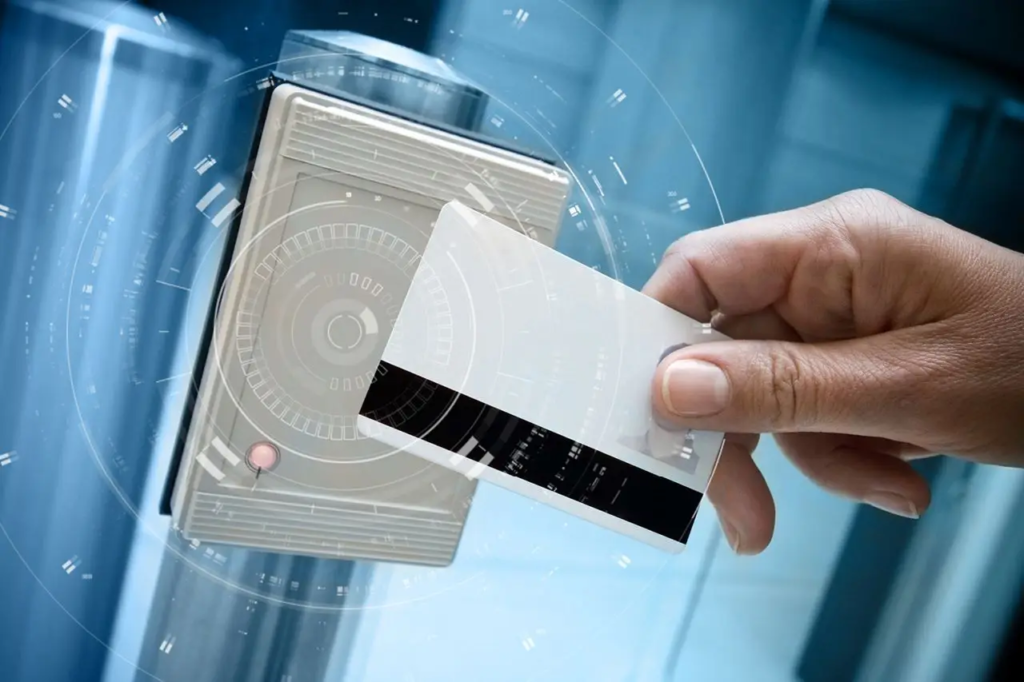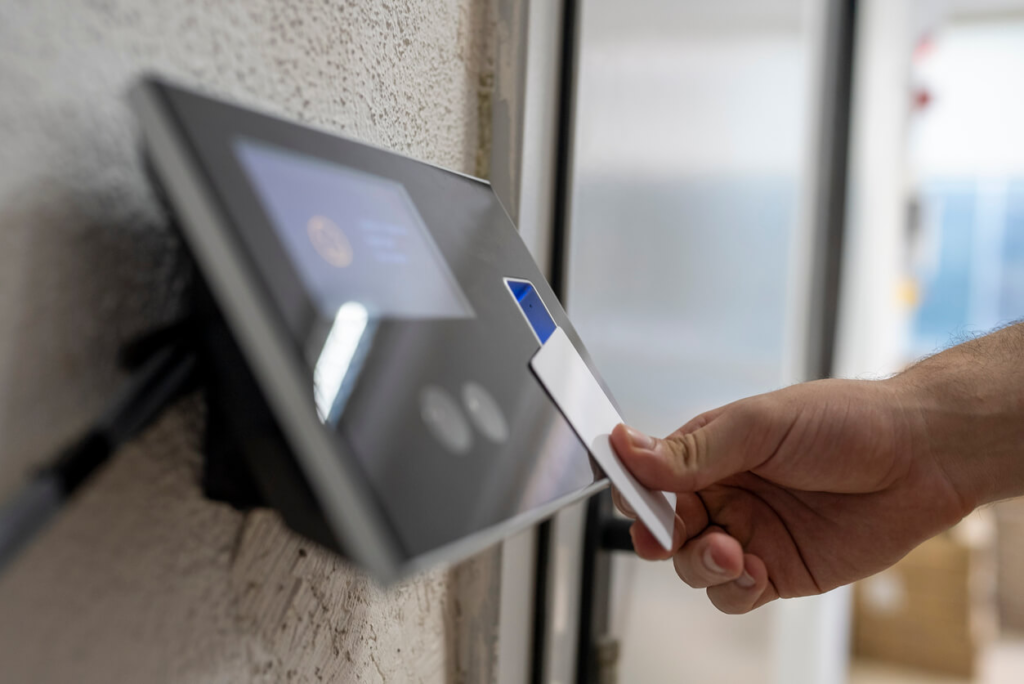
Contact Smart Card vs Contactless: Which One Is Safer for Access Control?
Security is always a top concern when choosing an access control system, especially for offices, data centres, and restricted zones. In this context, two standard technologies stand out: Contact Smart Cards and contactless cards. Both offer unique advantages, but they operate very differently. A Contact Smart Card requires physical contact with a reader to transmit data. This makes it harder to intercept or duplicate.
In contrast, contactless cards use radio frequency (RF) to communicate wirelessly, providing faster access but sometimes raising security concerns. So, which option is safer for your organization? In this article, we’ll compare how each card works, explore real-world risks, and help you decide based on your environment and needs.
Physical Security Advantages of Contact Smart Card
One of the primary security strengths of the Contact Smart Card lies in its physical contact interface. A user inserts the card into a reader, creating a closed system that is less vulnerable to external interference. Hackers cannot intercept or skim information remotely, significantly reducing the risk of data breaches. Furthermore, many Contact Smart Cards include embedded microprocessors and secure encryption protocols, enhancing their ability to resist tampering. The need for physical interaction acts as a natural barrier against unauthorized access attempts. While not impervious to attack, these cards require much more effort to compromise, which deters casual hackers and increases your overall security posture.
| Feature | Contact Smart Card | Contactless Card |
|---|---|---|
| Security | High – physical interface resists remote attacks | Moderate – vulnerable to skimming and relay attacks |
| Convenience | Requires insertion – slower access | Tap-and-go – fast and easy |
| Environmental Suitability | Better for dirty/noisy/industrial settings | Ideal for clean, fast-paced environments |
| Maintenance | May wear mechanically but easy to replace | Requires RF tuning, firmware updates |
Contact Smart Card Activation Offers Safer Signal Control
Contactless cards are undeniably more convenient. Users wave or tap their cards near a reader, which speeds up entry and reduces physical wear on devices. However, with that ease comes risk. Contactless smart cards continuously broadcast signals, even when not in use. Malicious actors can intercept or clone these signals without proper safeguards like encryption and mutual authentication.
In contrast, a Contact Smart Card only becomes active during insertion. This controlled activation reduces opportunities for unauthorized signal access. Organizations must evaluate whether the minor delays associated with contact cards are acceptable in exchange for tighter control and greater reliability in secure environments.
Deployment Environment Matters More Than You Think
Environmental factors play a huge role in determining which innovative card system is more effective. Contact Smart Cards perform reliably in industrial or high-interference environments. These settings often feature metal surfaces, electronic noise, or other signal-disrupting conditions that can interfere with contactless systems. Since contact cards don’t rely on signal transmission, they’re less prone to malfunction. On the other hand, contactless cards thrive in clean, fast-paced environments like offices, hospitals, or airports, where users demand rapid access. A Contact Smart Card setup might offer fewer disruptions and longer device life if your facility involves dirty, wet, or high-dust conditions.

Data Protection Protocols and Encryption Standards
Modern Contact Smart Cards typically support advanced encryption methods such as DES, 3DES, or AES. These standards ensure they cannot decode the information even if someone intercepts communication between the card and the reader. In addition, many cards offer two-factor authentication, requiring a PIN or biometric verification before granting access. Contactless cards can also incorporate these features, but they must be implemented with greater care due to the broadcast nature of wireless communication. Furthermore, contactless cards without mutual authentication leave systems open to relay attacks. Although both card types can be secured, the inherent characteristics of the Contact Smart Card make it easier to enforce strict data protection.
Vulnerabilities Unique to Contactless Systems
Despite the encryption available to contactless cards, their most significant weakness lies in their constant broadcasting. Without proper shielding, a hacker with a skimming device can collect card data from a short distance, sometimes even through clothing or wallets. These cards are also susceptible to relay attacks, where two devices trick the reader into thinking the legitimate card is present. Preventing these attacks requires sophisticated anti-skimming and anti-relay technology, which increases deployment costs. While securing a contactless system to high standards is possible, doing so demands ongoing investment and vigilance. In contrast, the passive nature of Contact Smart Cards eliminates many of these risks right out of the box.

Maintenance, Durability, and Long-Term ROI
Over time, Contact Smart cards and contactless systems will require maintenance in different ways. Contact cards experience physical wear due to insertion and removal, which can degrade the contact points. However, modern designs use durable materials and are easy to replace. Contactless systems avoid this kind of wear but may experience electronic interference or reader misalignment. Maintenance for contactless cards often involves updating software and recalibrating hardware, especially in dynamic RF environments. From a cost-efficiency standpoint, contact cards offer simpler diagnostics and fewer points of failure, making them easier to maintain in the long term if security remains your top concern.
Balancing Speed and Safety for Modern Access Needs
Every access control decision involves trade-offs. Contactless systems shine in high-traffic environments where speed is critical but come with elevated risks. In contrast, Contact Smart Cards offer a slower but more controlled authentication method. The key is to align your technology with your operational goals. For example, a hospital might prioritize speed and opt for contactless solutions, while a government data centre demands the heightened control of contact cards. With careful planning, some organizations even deploy hybrid solutions, combining both types of cards depending on user roles. This strategic approach ensures each point of entry is protected appropriately.

Why Contact Smart Card Still Wins in Security-Critical Use Cases
The safer option often depends on the context of the debate on whether to use a contact smart card or contactless. However, when pure security is your top priority, the Contact Smart Card remains the more robust solution. Its physical interface minimizes exposure to digital threats, its encryption standards are easier to enforce, and it thrives in environments that challenge wireless technologies. While contactless options have evolved and can be made secure, they demand more resources. For critical infrastructure, defence facilities, or high-value data centres, investing in Contact Smart Cards ensures your access control system meets the highest protection standards without sacrificing control.
Looking for a Secure Contact Smart Card Solution?
Our high-security Contact Smart Cards are engineered for access control systems that demand reliability, encryption, and tamper resistance. Built to perform in the toughest environments, they are the trusted choice for enterprises, government, and industrial sectors.
View Our Contact Smart Card

